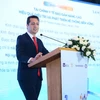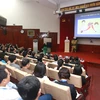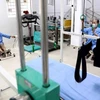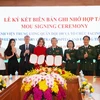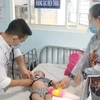Vietnam has taken the maximum effort and collaborated with international and regional countries to fight avian influenza H5N1, Deputy Minister of Agriculture and Rural Development Vu Van Tam said.
At the third One Health Conference co-organised by the Ministry of Agriculture and Rural Development and the Health Ministry in Hanoi on February 3, he underlined the need for long-term commitments to the combat against diseases that can be transmitted from animals to humans in any circumstances, while handling risks of emerging infectious diseases at the human-wildlife animal-environment interface.
Vietnam has made good progress to date but still needs to develop a strategic One Health (OH) coordination mechanism along with an OH action plan and road map, said Pratibha Mehta, United Nations Resident Coordinator in Vietnam.
International experience suggests that for sustainable results “One Health” requires multi-sectoral approach, beyond human and animal health sectors to include partners from natural resource management, ecosystem health, and development planning sectors, she added.
In recent months, worldwide attention has focused on the impact of new and emerging infectious diseases. Increasing pressure on fragile environments has brought humans, livestock and wildlife into ever closer contact.
Diseases that cross over from animals to humans, including Ebola and avian influenza, can have massive, rapid and far-reaching consequences on human health, livelihoods, food safety and economic development.
Vietnam is located in a relatively high-risk region for new, re-emerging and recurring infectious diseases in humans, livestock and animals. Given the threat posed by new and emerging diseases the UN still urged for stronger cooperation between human, animal and ecosystem health under the ‘One Health’ umbrella.
At the conference, participants discussed how to form a One Health partnership to broaden out mandate and scope of the existing Partnership for Avian and Human Influenza Prevention (PAHI).
The Partnership will bring different sectors and disciplines together to identify potential public health risks related to zoonotic infectious diseases and to align and coordinate prevention and control actions.-VNA
At the third One Health Conference co-organised by the Ministry of Agriculture and Rural Development and the Health Ministry in Hanoi on February 3, he underlined the need for long-term commitments to the combat against diseases that can be transmitted from animals to humans in any circumstances, while handling risks of emerging infectious diseases at the human-wildlife animal-environment interface.
Vietnam has made good progress to date but still needs to develop a strategic One Health (OH) coordination mechanism along with an OH action plan and road map, said Pratibha Mehta, United Nations Resident Coordinator in Vietnam.
International experience suggests that for sustainable results “One Health” requires multi-sectoral approach, beyond human and animal health sectors to include partners from natural resource management, ecosystem health, and development planning sectors, she added.
In recent months, worldwide attention has focused on the impact of new and emerging infectious diseases. Increasing pressure on fragile environments has brought humans, livestock and wildlife into ever closer contact.
Diseases that cross over from animals to humans, including Ebola and avian influenza, can have massive, rapid and far-reaching consequences on human health, livelihoods, food safety and economic development.
Vietnam is located in a relatively high-risk region for new, re-emerging and recurring infectious diseases in humans, livestock and animals. Given the threat posed by new and emerging diseases the UN still urged for stronger cooperation between human, animal and ecosystem health under the ‘One Health’ umbrella.
At the conference, participants discussed how to form a One Health partnership to broaden out mandate and scope of the existing Partnership for Avian and Human Influenza Prevention (PAHI).
The Partnership will bring different sectors and disciplines together to identify potential public health risks related to zoonotic infectious diseases and to align and coordinate prevention and control actions.-VNA


